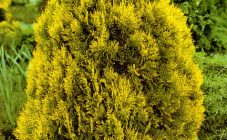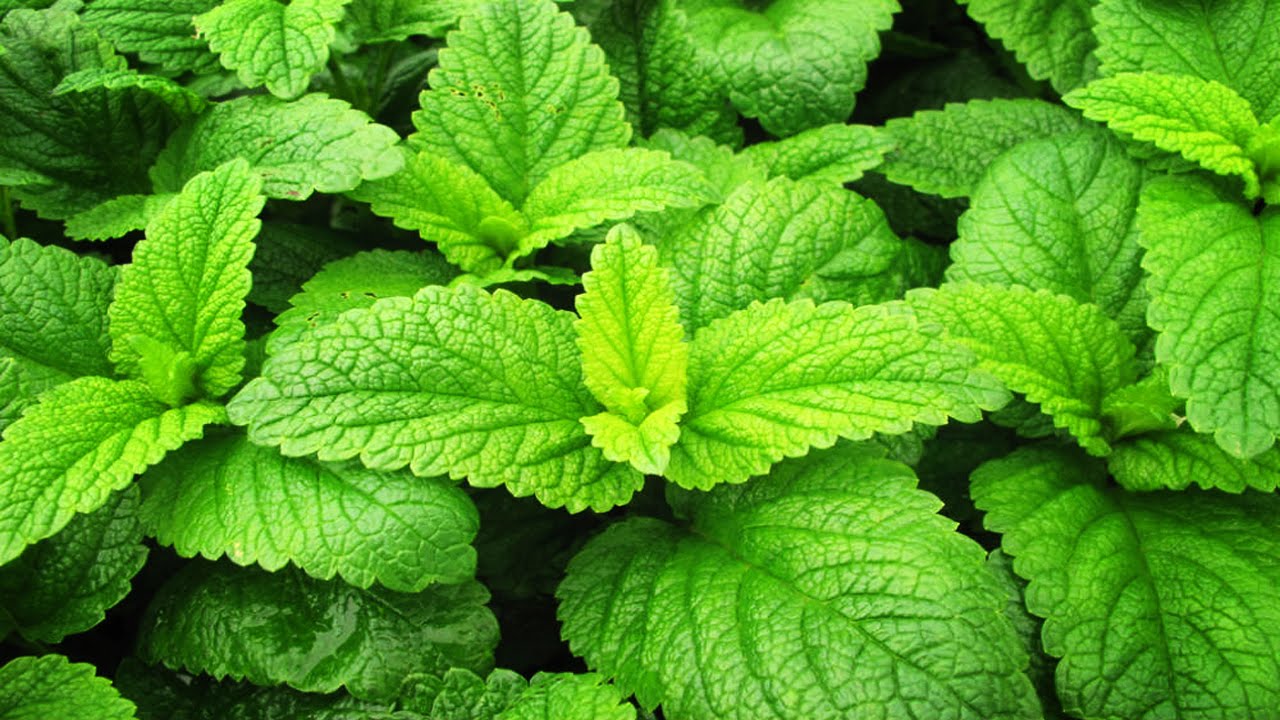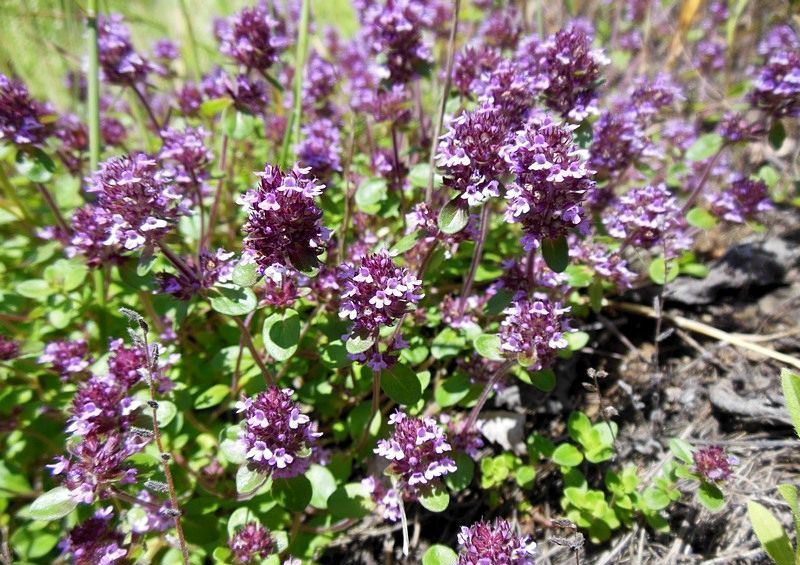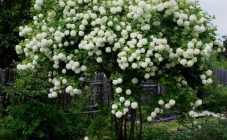Content:
Veres, or juniper, which is better known as juniper, is an evergreen coniferous shrub that belongs to the cypress family. In ancient times, this plant was used to treat snake bites, and dishes were also made from it, which did not allow milk to turn sour even in the hot season. The essential oil, cones and roots of juniper are still used in the manufacture of drugs for the prevention of various diseases.
Many chefs use Cossack juniper as a seasoning for a variety of meat dishes. The preparation of pates, sauces, marinades and liqueurs is also not complete without the use of juniper fruits. Walking sticks, pencils and various crafts are made from a certain type of juniper wood.
Description and some features of the juniper
Juniper has been popular among gardeners for decades. It is grown in central Russia, in the Moscow region and even in the Urals. In particular, this is due to its decorative properties, since the plant can be used to decorate hedges in the country and decorate personal plots.
Distinctive features of a juniper:
- the height of the shrub can vary from 1 to 3 m, but in some cases you can find plants in which a tree-like shape and in height they reach 8-12 m;
- the juniper has an erect, branched stem;
- young specimens are dark red, and old shrubs are brown;
- the foliage of the culture is characterized by an acicular or scaly shape, one whorl consists of several leaves;
- the fruits of the dioecious shrub are represented by oval green cones, the diameter of which is no more than 0.9 cm.
It is worth noting that this culture has both female and male cones. Male fruits vaguely resemble elongated spikelets, which are oval in shape. They are located on the leaf axils, and their shade is bright yellow.
You can cultivate various types of shrubs both at home and in the open field. For example, decorative compositions made of juniper are very popular.
How to plant a juniper correctly
It is necessary to plant a culture from a pot into open ground with the onset of spring - the ideal period will be early April or the second half of May. When is the best time to plant junipers, spring or fall? The shrub feels great even with an autumn planting (in October), so planting a juniper in the fall is also possible.
The culture belongs to light-loving plants, therefore, for the common juniper, it is recommended to choose only those areas that are not very shaded. There are no particular preferences for the composition of the soil, but the soil for the juniper must necessarily be moist, loose, sandy or calcareous. The acidity level should be in the range of pH 5-7 (it all depends on how the variety and type of shrub is chosen).
Purchase and preparation of planting material
For planting in open ground, three-year seedlings are ideal, which must be purchased from specialized gardening stores or nurseries with a good reputation. Before you buy a seedling, you need to carefully examine it for signs of disease, if there are lesions, it is better to refrain from buying. In the process of planting a plant, you need to try to keep an earthen lump on the root system, otherwise the transplant will injure the tips of the roots.
If the seedlings are first planted in a pot, the subsequent planting in the ground can be done at any time during the season. Can you plant junipers in August? Yes, but you should choose a moderately warm day; on hot days, planting a plant is strictly prohibited.
How to plant a juniper on a trunk
Anyone who decides to start growing a juniper should read some recommendations for proper planting in order to avoid possible mistakes. The planting algorithm consists of several stages:
- If the shrub is large, the distance between the holes must be maintained at least 2 m, and if the plant is small - 0.5 m.
- The depth of the planting hole depends on the size of the clod of earth on the roots. But its depth must necessarily exceed the length of the roots at least 2 times.
- 2 weeks before planting, the bottom of the hole needs to be covered with sand for drainage or broken brick, the layer height should be 20 cm.Then you need to take a soil mixture, which includes peat, sand, soddy clay soil, mix it with nitroammophos and fill it with 2 / 3 landing pits.
- After the seedling has been placed in the hole, cover with a mixture of soil, but without using fertilizers. In this case, the neck of the root system should be 10 cm above the soil surface.
The final stage is watering the seedlings, and after the water is completely absorbed, the trunk circle must be covered with mulch. For these purposes, experts advise using peat, chips or sawdust, while the layer thickness should be 5-8 cm.
How often to water and how to fertilize juniper
Growing and planting a juniper does not present any particular difficulties. Subject to all the recommendations for planting and care, even the most inexperienced gardener who does not know at all how to plant a juniper will be able to grow this amazing shrub on his site. Crop care consists of several key points, namely:
- Watering.
- Periodic foliage moistening.
- Loosening the soil.
- Top dressing.
The question of how often to water a juniper must be decided based on the climatic features in the growing region. Throughout the season, you need to water the juniper only if the weather is very hot, and take no more than 1 bucket of water for one seedling. It is recommended to moisturize the leaves once every 7 days, especially if an ordinary or Chinese shrub is being grown. Several times throughout the season it is necessary to loosen the soil so that a film does not form near the trunk circle, and also to remove weeds.
How to feed juniper in summer
It is necessary to evenly distribute 40 g of nitroammophoska over the entire area of the earth near the trunk circle. After the fertilizer has been applied to the soil, the standard juniper should be watered abundantly.
How can you propagate a juniper
There are several ways:
- propagation by layering (applicable only to creeping varieties),
- seeds,
- cuttings.
The most popular is the method of propagation by cuttings; step by step instructions will be presented below.
Cuttings should be prepared in the spring, cutting small shoots for this, which are already stiff. In length, the cuttings should be at least 5 cm, they must have an internode and a "heel". For these purposes, it is highly not recommended to cut the cuttings; you need to pluck it with your hands so that the parent plant remains at the end, or rather, a piece of its bark. The next step is the treatment of the cuttings with a substance that will stimulate the active growth of the root system.
It is necessary to plant cuttings following the 7 * 7 scheme in a mixture of earth, for the preparation of which you will need peat or humus, as well as sand. After the planting material has been planted, it must be covered with a glass jar on top for protective purposes.
Diseases and pests
Often, juniper can infect a fungal disease such as rust. You can determine that a plant is infected by cones, shoots, skeletal branches and needles, on which spindle-shaped thickenings appear. The root collar becomes covered with influxes and swellings, the bark begins to dry and crumble, which leads to the formation of deep wounds. If you do not apply any methods of treatment, this will lead to the death of the plant.
To eliminate the first signs of this disease, it is necessary to prune the infected branches. Sections and wounds must be disinfected using a 1% solution of copper sulfate for these purposes, then take Ranet paste and process them. The cut branches must be burned immediately.
Also, juniper can suffer from diseases such as:
- Shoot bark nectriosis.
- Alternaria.
- Schütte.
- Biotorella cancer and rust.
If, when growing a crop, pay due attention to it and create comfortable conditions, strong immunity will protect the plant from damage by pests and diseases.



















